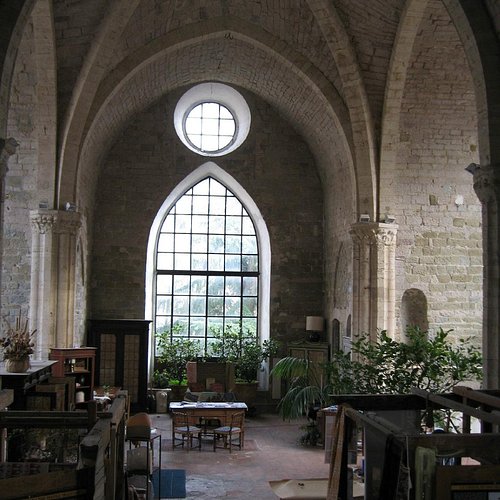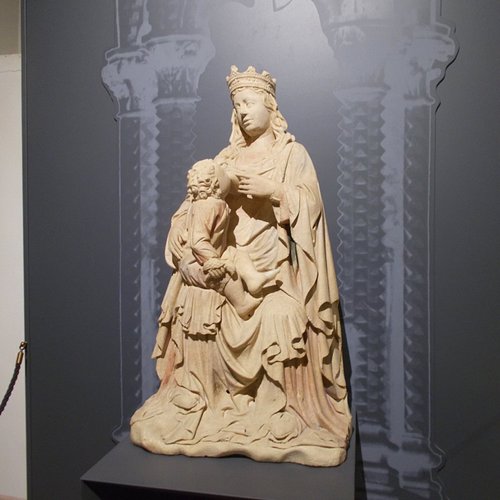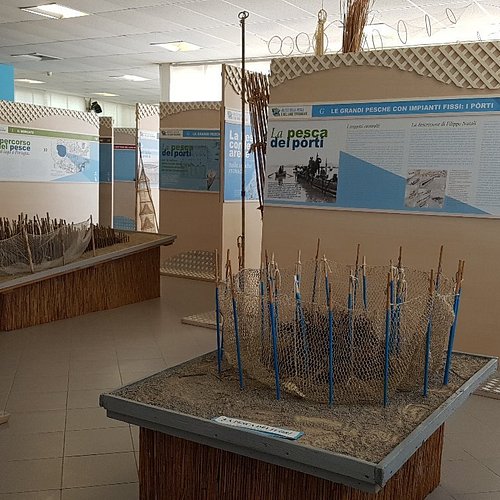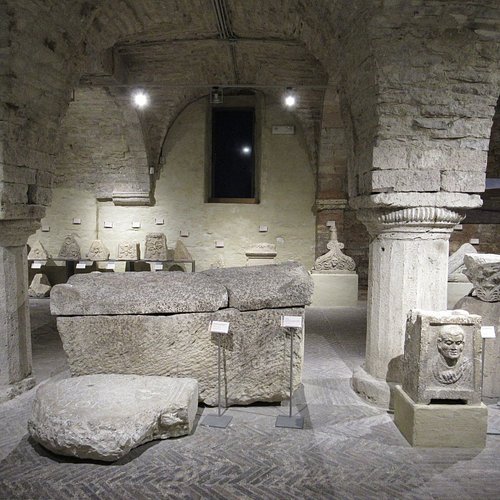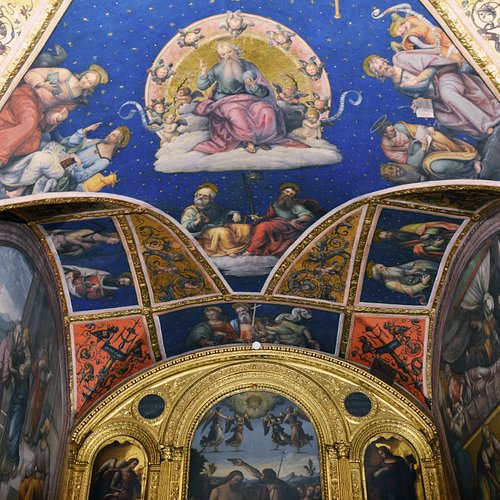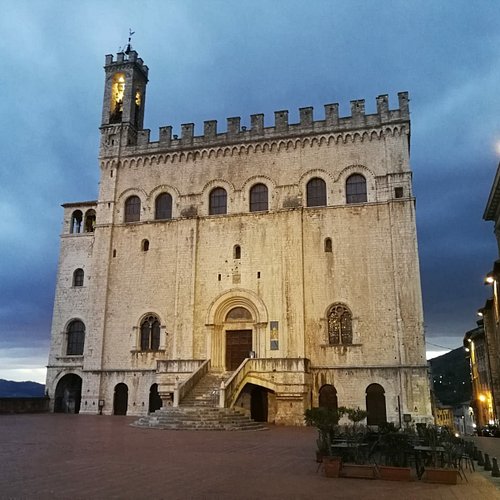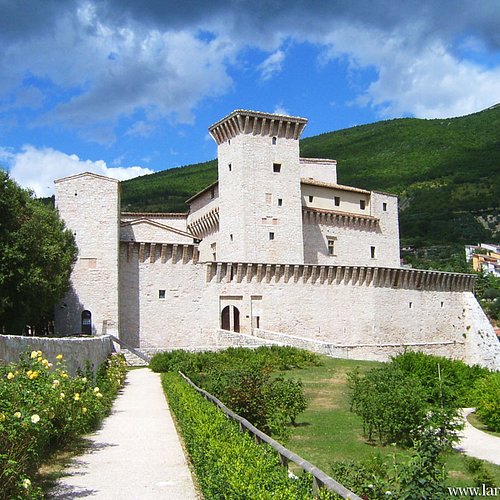Things to do in Province of Perugia, Umbria: The Best Museums
The Province of Perugia (Italian: Provincia di Perugia) is the larger of the two provinces in the Umbria region of Italy, comprising two-thirds of both the area and population of the region. Its capital is the city of Perugia. The province covered all of Umbria until 1927, when the province of Terni was carved out of its southern third. The province of Perugia has an area of 6,334 km² covering two-thirds of Umbria, and a total population of about 660,000. There are 59 comunes (Italian: comuni) in the province. The province has numerous tourist attractions, especially artistic and historical ones, and is home to the Lake Trasimeno, the largest lake of Central Italy. It historically the ancestral origin of the Umbri, while later it was a Roman province and then part of the Papal States until the late 19th century.
Restaurants in Province of Perugia
1. Museo-Laboratorio di Tessitura a Mano Giuditta Brozzetti
Overall Ratings
5.0 based on 344 reviews
Monday to Friday: 9:00 -13:00. Afternoons, Saturday and Sunday also available by appointment. The exclusive workshop is located in the fascinating, deconsecrated Romanesque church of San Francesco delle Donne.
2. Museo-Laboratorio di Vetrate Artistiche Moretti Caselli
Overall Ratings
5.0 based on 187 reviews
Museo Laboratorio Moretti Caselli making and restoration of stained glass windows and of works of artSince 1860, for five generations, a family of artists has been making painted and baked stained-glass windows in the historic centre of Perugia.The Moretti Caselli Studio is located in a fifteenth-century residence that once belonged to the Baglioni family.Visitors can plunge into history and the activity of the past by enjoying guided visits by appointment.
Reviewed By ChrisJaytravels
Excellent and interesting to see the history of the workshop see the works and then walk one block over and SEE some of restored glass in the church. Amazing and interesting!
3. Museo della Porziuncola
Overall Ratings
5.0 based on 1,893 reviews
Reviewed By GreenInsights - Perth, Australia
A feature inside and out in the courtyard is an extensive display of wonderful nativity scenes from all over the world. Fun for all ages. Great gift shop too
4. Fishing Museum (Museo della Pesca)
Overall Ratings
4.5 based on 48 reviews
Find out about the history and the art of fishing at this unique specialty museum.
5. Museo e Foro Romano
Overall Ratings
4.5 based on 425 reviews
This well-preserved Roman temple to Minerva, with its famous classical façade, is now a Christian Church.
Reviewed By 82manuelal - Luxembourg City, Luxembourg
This Museum is located in Via Portica and represents the Roman life in this region; the temple of Minerva where is now the Commune, give an exemple, this museo has six columns in the entrance, looks like Panteon in Rome, and demonstrate the Roman aera and the temples of Forum Romanum; Many stones a & sculptures, to admire, merite a visit.
6. Collegio del Cambio
Overall Ratings
4.5 based on 230 reviews
Perugia's Exchange Guild, the home of the region's money changers, dates from the thirteenth-century and boasts some of Italy's best preserved Renaissance frescoes painted by Perugino.
Reviewed By 58philipp - Herentals, Belgium
Impressive historical place. Excellent to have the old (very) coins on display. Beautifully decorated.
7. Palazzo dei Consoli and Museo Civico
Overall Ratings
4.5 based on 749 reviews
This museum is known for its collection of the famous Eugubine Tablets, which are seven bronze sheets that comprise a fundamental epigraphic document of the Umbrian civilization, dating back to the end of the 2nd century BC.
Reviewed By EmilioG496 - Rome, Italy
A wide square with a wonderful view on the valley. On the other side there is the green mountain. But the best is the "Palazzo dei Consoli". The building was a example of medieval architectural with a lot of stairs and some secret passages, The Museum exhibition has a lot of paintings from 15° and 16° century. Furthermore there are seven rare tables (Tavole eugubine) written in part with an old language more ancient than latin and part with "Etruscan language" engraved one century b.C.
8. National Archaeological Museum of Umbria
Overall Ratings
4.5 based on 219 reviews
Reviewed By Brun066 - Florence, Italy
It's uncertain whether Perugia was among the twelve major cities being part of the Etruscan confederation of Central Italy. It's possible that this uncertainty persists because the development of Perugia as true Etruscan city (since the end of the 4th century BC) is later than that of the other confederate cities, being it originally a settlement by the Umbrian people. On the other hand the architectural testimonies of the Etruscan walls and gates are the most impressive ever, so Etruscan Perugia is undoubtedly a historical phenomenon worthy of the utmost attention. This importance of the Etruscan city is also visible from the Archaeological Museum, which has therefore earned the title of "National Archaeological Museum of Umbria", despite the fact that in Umbria region there are many important archaeological remains and finds. The Museum also receives prestige from being housed in the imposing former San Domenico convent, and from being characterized by the large cloister that is at its center. Here the Museum has been housed since 1948: the collections are displayed on the two floors of the building surrounding the cloister. A large number of cinerary urns are on display, embellished with sculptures that the local aristocracy commissioned to artists of often great value, and who were inspired by Greek myths. The myths are illustrated by captions in Italian and English, which allow the visitor to recall the fascinating stories of these ancient civilizations. In my opinion, at least three halls cannot be overlooked, they are the following. The room that houses the splendid bronze plates and figurines (including many plaques once covering some parade or war carts) found in 1812 in San Mariano (a hamlet of Corciano municipality), 13 Km from Perugia. The works, dating back to the 6th century BC, had already been partly plundered by local farmers, so many dozens of them are today in Munich; but in the Museum still the majority of the pieces (180) remains. Then the underground environment in which the urban tomb of the "Cai Cutu" family, discovered in 1983, never violated, and used since the 3rd until the 1st century BC, was reconstructed on a 1:1 scale. It shows fifty carved urns, placed in their original position. Finally, the room dedicated to a tomb plundered much more recently (2003) and recovered in 2013: the tomb (equally internal to present-day Perugia, used in the second and first centuries BC) belonging to the "Cacni" family. The twenty-two urns coming from the tomb are richly decorated, featuring sculptures of high artistic level. There are also other objects found in the tomb: weapons, armor, ceramics, etc. In essence, even if there were only these noteworthy halls (and certainly not so), they would do this a museum not to be missed.
9. Chiesa di Santa Maria delle Rose. Mostra Maria
Overall Ratings
4.5 based on 168 reviews
Since the year 2000, the permanent MARIA Exhibition by Guido Dettoni della Grazia is like a path to a whole spiritual experience therein offered. The visual and tactile experience consists in the artwork MARIA, the enlarged TAU to be touched and embraced as well as the encounter with the Face of Christ available -upon request only- to be touched (not seen) in a hidden part of the churchnof Santa Maria delle Rose.
10. Museo Civico Rocca Flea
Overall Ratings
4.5 based on 149 reviews
Dal 1999 la Rocca Flea è sede del Museo Civico. Il suo nome, derivato dal vicino fiume Flebeo, poi chiamato Feo, compare già in documenti del XII secolo. Con il succedersi delle diverse dominazioni imposte alla città, vi si insediarono dapprima le milizie di Federico Barbarossa, poi quelle del papa e nel 1208 quelle della guelfa Perugia. Danneggiata dai molti conflitti, venne restaurata da Federico II intorno al 1242. Nel XVI secolo divenne la residenza dei legati pontifici, mentre nel 1888 la Rocca diventa sede carceraria. Riportata al suo precedente aspetto grazie a recenti restauri la fortezza è diventata dal 1999 sede del museo civico. Il Polo Museale Città di Gualdo Tadino rappresenta un circuito culturale di facile fruizione per le scuole di ogni ordine e grado. Le attività e le tematiche affrontate sono diversificate a seconda dell’ordine scolastico e dell’età degli studenti.

